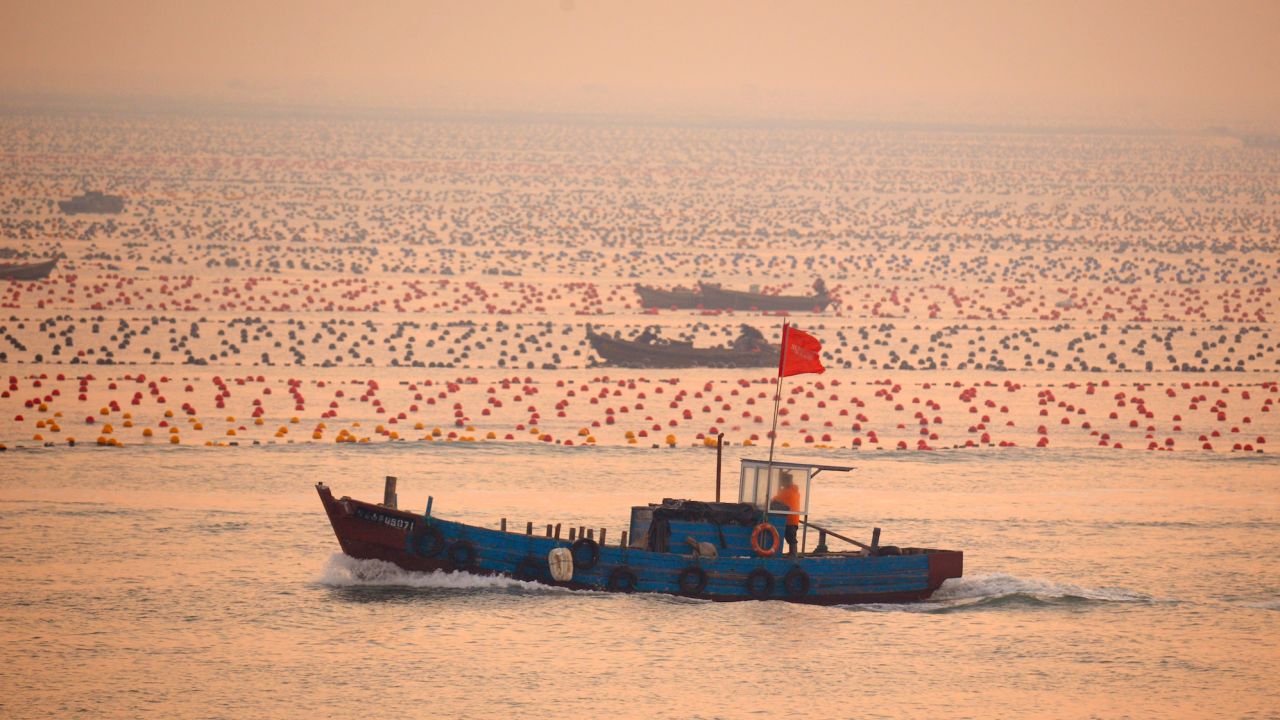Brisbane, Australia
CNN
—
Melting ice in the Antarctic is not just raising sea levels but slowing down the circulation of deep ocean water with vast implications for the global climate and for marine life, a new study warns.
Led by scientists from the University of New South Wales and published Wednesday in the journal Nature, the peer-reviewed study modeled the impact of melting Antarctic ice on deep ocean currents that work to flush nutrients from the sea floor to fish near the surface.
Three years of computer modeling found the Antarctic overturning circulation – also known as abyssal ocean overturning – is on track to slow 42% by 2050 if the world continues to burn fossil fuels and produce high levels of planet-heating pollution.
A slow down is expected to speed up ice melt and potentially end an ocean system that has helped sustain life for thousands of years.
“The projections we have make it look like the Antarctic overturning would collapse this century,” said Matthew England, deputy director of the Australian Research Council’s Centre for Excellence in Antarctic Science, who coordinated the study.
“In the past, these overturning circulations changed over the course of 1,000 years or so, and we’re talking about changes within a few decades. So it is pretty dramatic,” he said.
Most previous studies have focused on the Atlantic Meridional Overturning Circulation (AMOC), the system of currents that carry warm water from the tropics into the North Atlantic. The cold, saltier water then sinks and flows south.
Its Southern Ocean equivalent is less studied but does an important job moving nutrient-dense water north from Antarctica, past New Zealand and into the North Pacific Ocean, the North Atlantic and Indian Ocean, the report’s authors said in a briefing.
The circulation of deep ocean water is considered vital for the health of the sea – and plays an important role in sequestering carbon absorbed from the atmosphere.
According to the report, while a slowdown of the AMOC would mean the deep Atlantic Ocean would get colder, the slower circulation of dense water in the Antarctic means the deepest waters of the Southern Ocean will warm up.
“One of the concerning things of this slowdown is that there can be feedback to further ocean warming at the base of the ice shelves around Antarctica. And that would lead to more ice melt, reinforcing or amplifying the original change,” England said.
As global temperatures rise, Antarctic ice is expected to melt faster, but that doesn’t mean the circulation of deep water will increase – in fact the opposite, scientists said.
In a healthy system, the cold and salty – or dense – consistency of melted Antarctic ice allows it to sink to the deepest layer of the ocean. From there it sweeps north, carrying carbon and higher levels of oxygen than might otherwise be present in water around 4,000 meters deep.
As the current moves northward, it agitates deep layers of debris on the ocean floor – remains of decomposing sea life thick with nutrients – that feed the bottom of the food chain, scientists said.
In certain areas, mostly south of Australia in the Southern Ocean and in the tropics, this nutrient-rich cold water moves toward the surface in a process called upwelling, distributing the nutrients to higher layers of the ocean, England said.
However, Wednesday’s study found that as global temperatures warm, melting sea ice “freshens” the water around Antarctica, diluting its saltiness and raising its temperature, meaning it’s less dense and doesn’t sink to the bottom as efficiently as it once did.
The report’s co-author, Steve Rintoul from Australia’s Commonwealth Scientific and Industrial Research Organisation and the Australian Antarctic Program Partnership, said sea life in waters worldwide rely on nutrients brought back up to the surface, and that the Antarctic overturning is a key component of that upwelling of nutrients.
“We know that nutrients exported from the Southern Ocean in other current systems support about three quarters of global phytoplankton production – the base of the food chain,” he said.
“We’ve shown that the sinking of dense water near Antarctica will decline by 40% by 2050. And it’ll be sometime between 2050 and 2100 that we start to see the impacts of that on surface productivity.”
England added: “People born today are going to be around then. So, it’s certainly stuff that will challenge societies in the future.”

The report’s authors say the slowing of the Antarctic ocean overturning has other knock-on effects for the planet – for example, it could shift rain bands in the tropics by as much as 1,000 kilometers (621 miles).
“Shut it down completely and you get this reduction of rainfall in one band south of the equator and an increase in the band to the north. So we could see impacts on rainfall in the tropics,” said England.
Earlier this month, the Intergovernmental Panel on Climate Change (IPCC) warned in its latest report that the impacts of rising global temperatures were more severe than expected. Without immediate and deep changes, the world is hurtling toward increasingly dangerous and irreversible consequences of climate change, it added.
The IPCC report found that the goal of limiting global warming to 1.5 degrees Celsius (2.7 degrees Fahrenheit) above preindustrial levels was still possible, but it’s becoming harder to achieve the longer the world fails to cut carbon pollution.
England points out that the IPCC predictions don’t include ice melt from Antarctic ice sheets and shelves.
“That’s a very significant component of change that’s already underway around Antarctica with more to come in the next few decades,” England said.
Rintoul said the study was another urgent warning on top of all the ones that have come before it.
“Even though the direct effect on fisheries through reduced nutrient supply might take decades to play out, we will commit ourselves to that future with the choices we make over the next decade.”